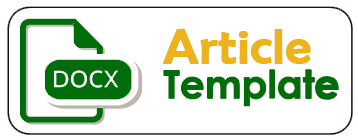A CORPUS-BASED ANALYSIS OF LEXICAL PATTERNS IN ELECTRICAL ENGINEERING TEXTBOOKS
DOI:
https://doi.org/10.32497/orbith.v21i2.6772Keywords:
Corpus linguistics, Electrical engineering, ESP, Lexicogrammar, CollocationsAbstract
This study conducted a comprehensive corpus-based analysis of 15 prominent electrical engineering textbooks to identify their characteristic lexicogrammatical features. Utilizing AntConc software, the research focused on two key aspects: the most frequently occurring nouns, verbs, and adjectives, and the most common lexical collocations. Findings revealed a consistent dominance of core technical nouns such as voltage, figure, power, current, and circuit, which serve as central conceptual elements in the field. High-frequency verbs like shown, used, and given highlighted the descriptive and procedural nature of the discourse, often appearing in an objective, impersonal tone. Furthermore, the analysis uncovered significant discipline-specific collocations (e.g., voltage drop, current flow) and lexical bundles ("as shown in Figure," "in this circuit"), indicating the formulaic and chunked nature of engineering language. These recurrent patterns underscore their communicative importance and pedagogical value. The study's results offer empirical evidence for designing more effective English for Specific Purposes (ESP) curricula, developing specialized vocabulary resources, and enhancing textbook materials to better support engineering students in acquiring academic and professional fluency.
References
Biber, D., Johansson, S., Leech, G., Conrad, S., & Finegan, E. (1999). Longman Grammar of Spoken and Written English. Harlow: Pearson Education.
Biber, D., Conrad, S., & Cortes, V. (2004). If you look at...: Lexical bundles in university teaching and textbooks. Applied Linguistics, 25(3), 371–405.
Biber, D., Conrad, S., & Reppen, R. (2007). Corpus linguistics: Investigating language structure and use. Cambridge University Press.
Botchwey, E., Owusu, E., Abunya, L. N., Addo, M. A., & Appiah, P. (2024). English for engineering education: A corpus study of lexicogrammatical contents of engineering textbooks. African Journal of Applied Research, 10(2), 25–43. http://doi.org/10.26437/ajar.01.12.2024.02
Flowerdew, J., & Peacock, M. (Eds.). (2016). Research perspectives on English for academic purposes. Palgrave Macmillan.
Hyland, K. (2009). Teaching and Researching Writing (2nd ed.). Pearson Education.
Hyland, K. (2011). English for academic purposes: An advanced resource book. Routledge.
Lemke, J. L. (1998). Multiplying meaning: Visual and verbal semiotics in scientific text. In J. R. Martin & R. Veel (Eds.), Reading Science (pp. 87–113). Routledge.
Nation, I. S. P. (2001). Learning Vocabulary in Another Language. Cambridge University Press.
McEnery, T., & Wilson, A. (2019). Corpus linguistics: An introduction (3rd ed.). Edinburgh University Press.
Nation, I. S. P. (2016). Teaching and learning vocabulary. Heinle Cengage Learning.
Paltridge, B., & Starfield, S. (2013). The handbook of English for specific purposes. Wiley-Blackwell.
Sinclair, J. (1991). Corpus, Concordance, Collocation. Oxford University Press.
Sinclair, J. M. (2004). Trust the text: Language, corpus and discourse. Routledge.
Swales, J. M., & Feak, C. B. (2012). Academic Writing for Graduate Students (3rd ed.). University of Michigan Press.
Downloads
Published
Issue
Section
License
Authors who publish with this journal agree to the following terms:Authors retain copyright and grant the journal right of first publication with the work simultaneously licensed under a Creative Commons Attribution License that allows others to share the work with an acknowledgement of the work's authorship and initial publication in this journal.
Authors are able to enter into separate, additional contractual arrangements for the non-exclusive distribution of the journal's published version of the work (e.g., post it to an institutional repository or publish it in a book), with an acknowledgement of its initial publication in this journal.
Authors are permitted and encouraged to post their work online (e.g., in institutional repositories or on their website) prior to and during the submission process, as it can lead to productive exchanges, as well as earlier and greater citation of published work (See The Effect of Open Access).






